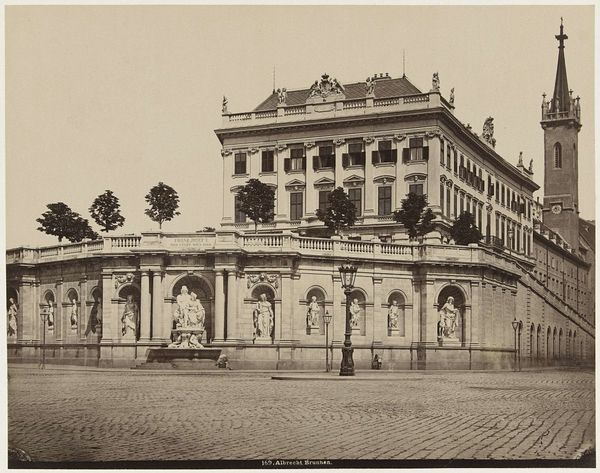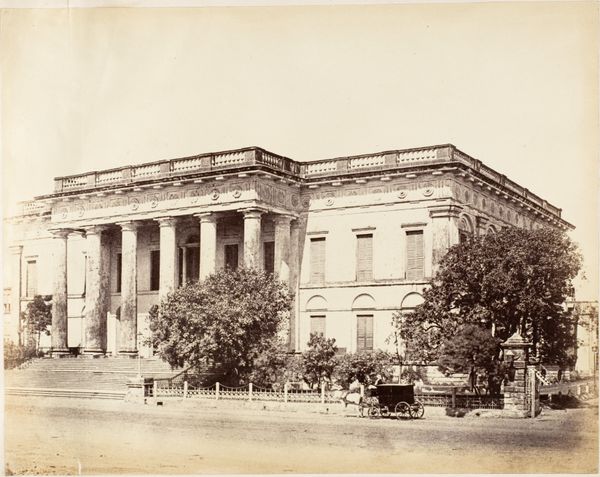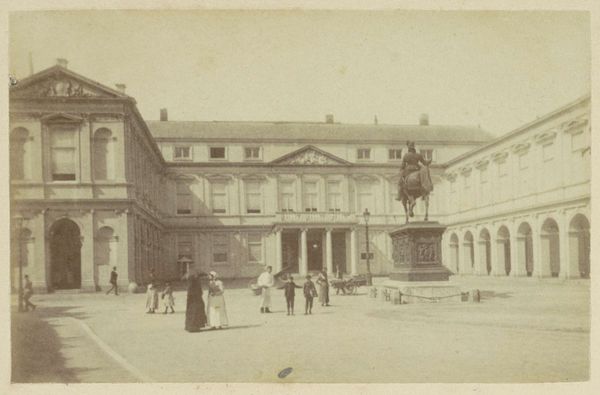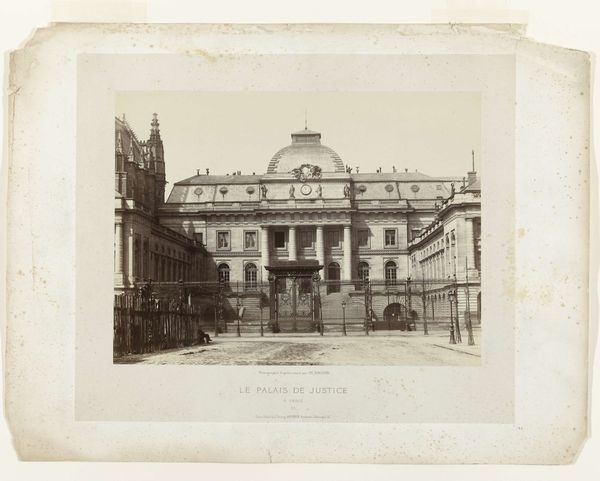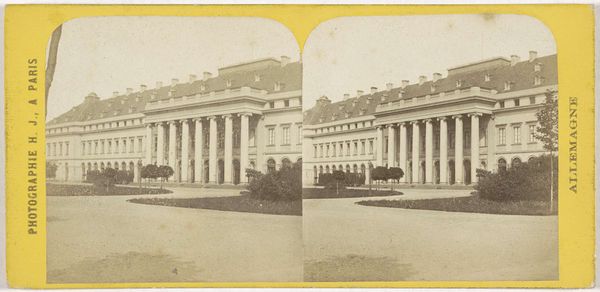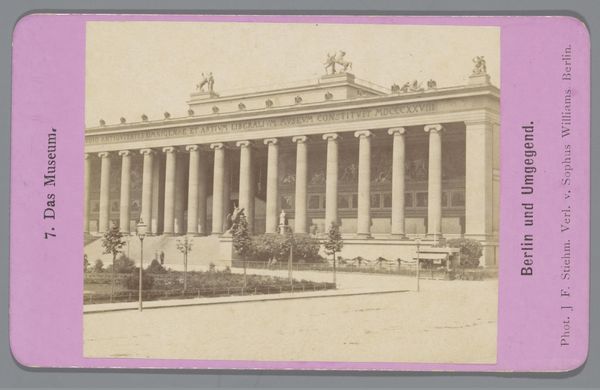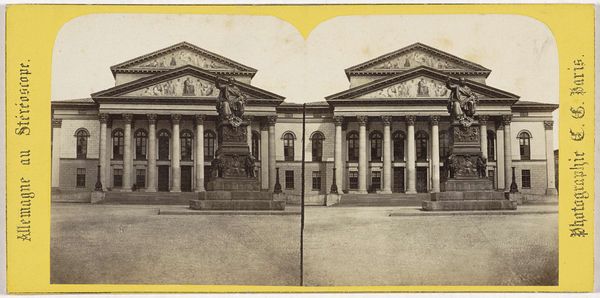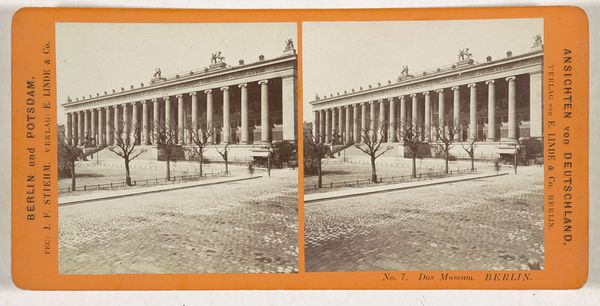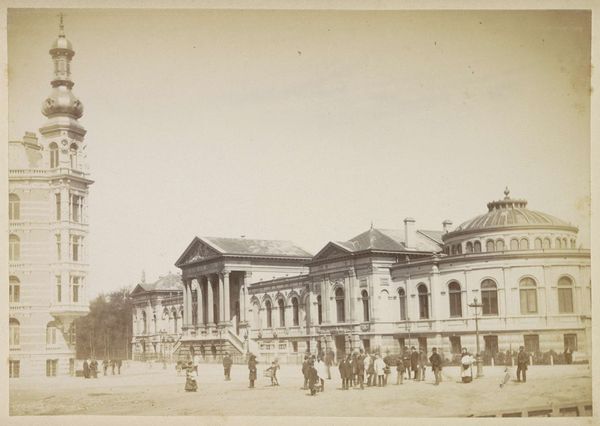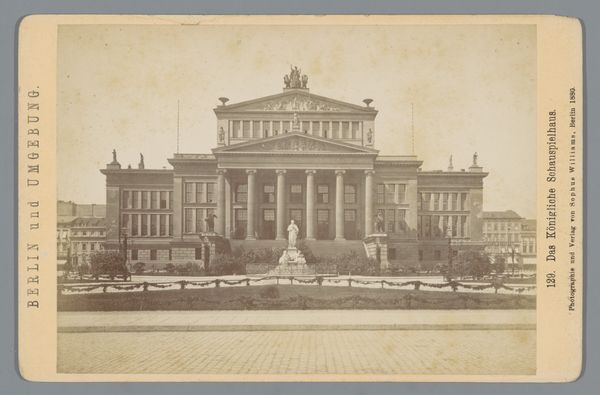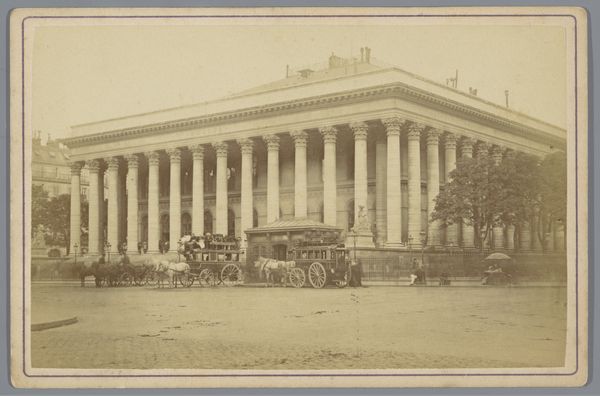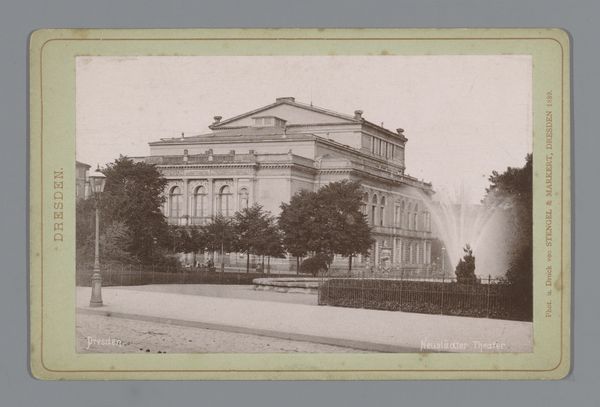
Dimensions: height 110 mm, width 167 mm, height 341 mm, width 243 mm
Copyright: Rijks Museum: Open Domain
Editor: This is Francis Godolphin Osbourne Stuart's "Gebouw in Londen, mogelijk het British Museum," taken sometime between 1870 and 1881. It's a photograph on toned paper and there is a beautifully rendered quality to the building’s facade, with this strong emphasis on line and form. I’m curious, what details jump out at you when you look at it? Curator: Ah, yes! It whispers stories of a London caught between the grandeur of Neoclassical ideals and the gritty reality of Victorian life, doesn’t it? The almost ghostly figures in the foreground add a touch of social commentary. The kids seem separate from the opulence. What is absent is a true interaction between architecture and population. This reminds me, ever so gently, of Piranesi's engravings. Do you notice how the very precise lines seem to indicate two distinct worlds, almost a literal class structure? Editor: Absolutely. I didn't make that connection right away with Piranesi, but now that you mention it, the contrast is striking. So, it's less about celebrating the architecture and more about using it to highlight social disparities? Curator: Perhaps, perhaps not exclusively. Photography in the 19th century was such a powerful, new tool, used for both documentation and artistic expression. Stuart, likely unconsciously, seems to be asking: What does progress truly mean? Is it simply erecting magnificent buildings, or is it something more profound? And who gets to be a part of that progress? Are those two young boys in the frame meant to show progress includes all, or does that gate serve as a metaphoric divider between a select and cultured class and all the rest? I think it is a mix of these points, not either/or. It seems both documentary, beautiful and insightful, to me! Editor: I never considered the photograph’s narrative that way. It does provide a lens through which to look more closely at historical assumptions, both then and now. Thanks! Curator: And thank YOU for nudging me to ponder anew what this work means!
Comments
No comments
Be the first to comment and join the conversation on the ultimate creative platform.
